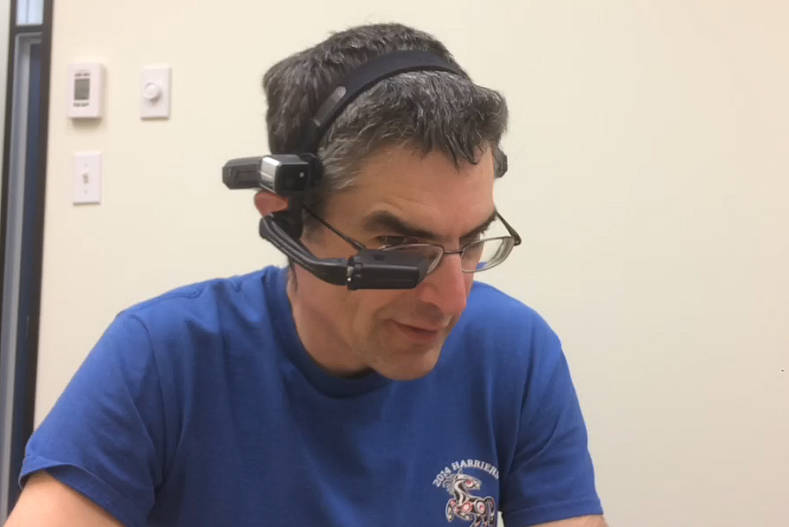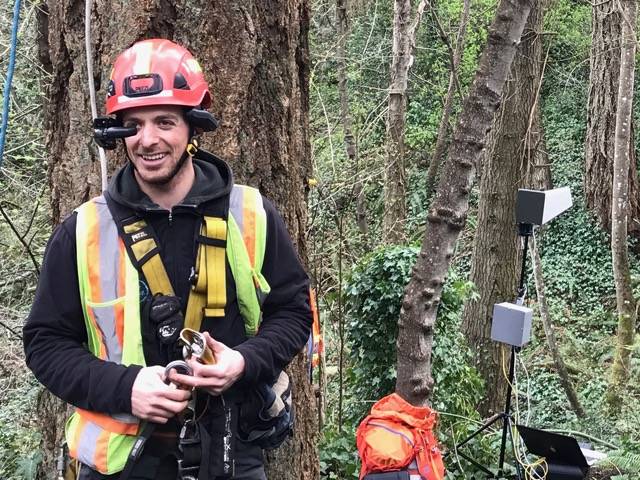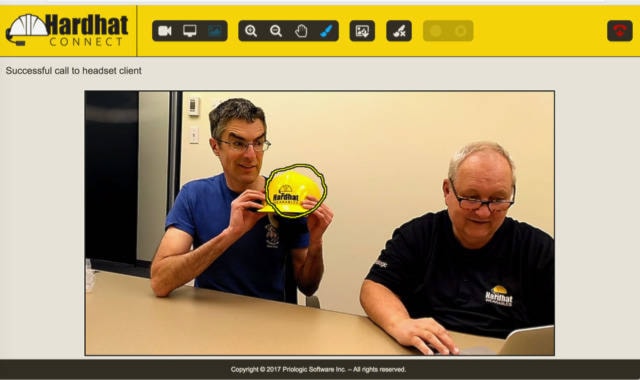It’s a simple concept, but it could save companies millions of dollars, hundreds of hours in expertise training and even save lives.
Hardhat Wearables, a startup project by Saanich’s Priologic Software Developers, has designed a program that allows a remote viewer to virtually join a camera-wearing person on site in the field.
The user wears a head-mounted camera and a screen. The headset is basically a computer, and the screen sits in front of an eye with a display of about one inch across that looks like it’s seven inches. This part has already been created, as Fuji and RealWear both sell head-mounted cameras and screens. However, with the Hardhat Wearables software a supervisor can join the user by watching the live feed through the helmet-mounted camera.
“A lot of the time these could be used when someone is climbing, either a tree, a telephone pole or a cell tower, though in those cases they would be wearing a climbing helmet rather than a hardhat,” said Priologic CEO Doug Pelton.
The supervisor can take a screen shot of an image that the worker is looking at, and actually freeze that onto the display screen of the worker, and then draw instructions on the picture. The user can also operate the headset with verbal commands, keeping their hands free to execute the job at hand.
It can mean the supervisor pointing out which trees to fall, or how to fix a complicated piece of machinery.
“A little while ago we got some interest from some guys in the forestry industry to provide this service,” Pelton said.
But the door is open to far more than forestry, as the possibilities are plentiful, he added.
“Typically it’s a mentoring situation, the supervisor can offer specific instructions to the [user],” Pelton said. “Whether it’s someone walking around in the woods, in a mine or in an oil and gas field, we’re focusing on those workplaces. It works well in B.C.”
For instance, if there’s a mechanical issue with an ocean oil rig that demands expertise beyond any of the mechanics or engineers on board, this program can save the company flying out an expert engineer, Pelton added.
It’s all being done from Priologic’s office at 3960 Quadra St. This year Pelton and his staff have visited plenty of trade shows, big and small, including the B.C. Tech Summit, in an attempt to find clients.
After nearly four years developing the software with what started as a side project, Hardhat Wearables still has a couple of final pieces to tie up, such as finalizing which head-mounted cameras will work best on various hardhats or hats.
Both the Fujitsu and RealWear head-mounted camera-screens cost in the thousands for one pair.
“We’re still playing around with hardhat options,” Pelton said. “Ultimately, the cameras will have to be better integrated with the hardhats or climbing helmets.”
If you think about it, Pelton said, the idea of working remotely has become increasingly common in the tech industry but only caught on at Priologic in the last couple of years.
At Priologic there are 25 staff in total, most working on a contract through American software giant Cisco.
Three years ago no one at Priologic worked from home, but when Pelton showed up on Monday he was one of about five staff at their Quadra office.
“It took some getting used to but we all end up on a video chat conference by 9:30 a.m. anyways.”
The Colwood Crawl is so bad, anyone who lives beyond there works electronically. Having employees work from home is a solution to the highway traffic, Pelton said.
So putting an interactive video conference into a rugged or remote workplace is only the next logical step.


